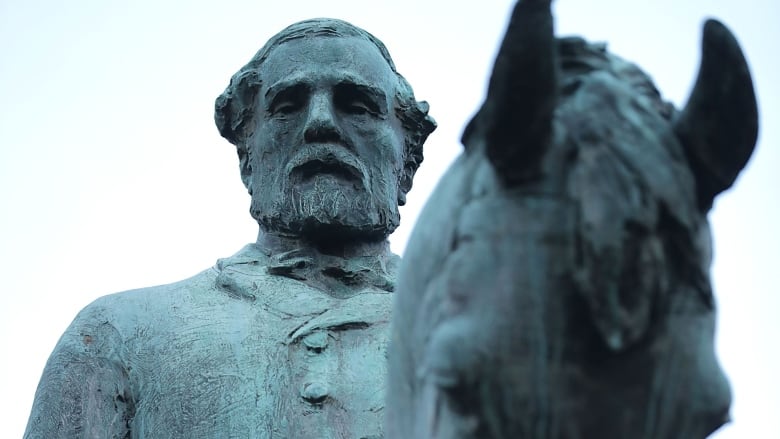Confederate statues represent 'image of America as a white society,' says historian

Confederate statues across the United States have become rallying points for white supremacists across the country — and U.S. President Trump reiterated his own opposition to take down Confederate statues arguing the statues represent "history and culture."
...can't change history, but you can learn from it. Robert E Lee, Stonewall Jackson - who's next, Washington, Jefferson? So foolish! Also...
—@realDonaldTrumpEric Foner knows a lot about the Confederacy and the Civil War. His book The Fiery Trial: Abraham Lincoln and American Slavery won the Pulitzer Prize for History.
He argues what many Confederate statues actually represent is "this image of America as a white society."

"These statues actually don't have a lot to do with the Civil War … They were put up mostly to be part of the legitimacy of white supremacy, of the Jim Crow system in the South, long after slavery."
Foner explains many of the statues were erected in the 1890s when the rights of black people were curtailed.
He tells Williams that if the statues were a "truly representative public history, they would not be as offensive."
"But you know, how many statues of black people are there in the South? Very, very few," Foner says, and this lack of representation paints a "very partial, limited picture of the actual history of the 19th century in the South."
Related: Top 10 Monuments To Black Americans
During the Civil War, Foner says, 45 per cent of the population in Virginia were black.
"Robert E. Lee did not speak for them at all. So you know, if you are going to keep Robert E. Lee, let's have a statue of Nat Turner, the slave rebel, or maybe of John Langston, the first black congressman from Virginia in the 1880s," Foner exclaims.
"But they don't put up statues of those guys because the statues are meant to symbolize white supremacy and putting up a statue of a black doesn't fit."
Nobody in history is perfect, Foner says, and argues there wouldn't be a lot of statues if that was a prerequisite but believes primarily you need to focus on "what is the most important thing in the lives of these men."
"These monuments are an expression of power," Foner tells Williams and it comes down to: "Who has the power to determine what the public presentation of history is?"
Foner says Southern history shows it's white people who have had this power but now others are making their voices heard — "claiming we don't like the public representation of history that has been dominant in this region for the last 200 years or so."
Personally, Foner says he's not against removing all the Confederate statues — "although there are some I think ought to come down."
"But I'm in favour of building more statues. Let's have a truly representative picture of Southern history in the public monuments there.
Listen to the full conversation near the top of this web post.
This segment was produced by The Current's Howard Goldenthal.
